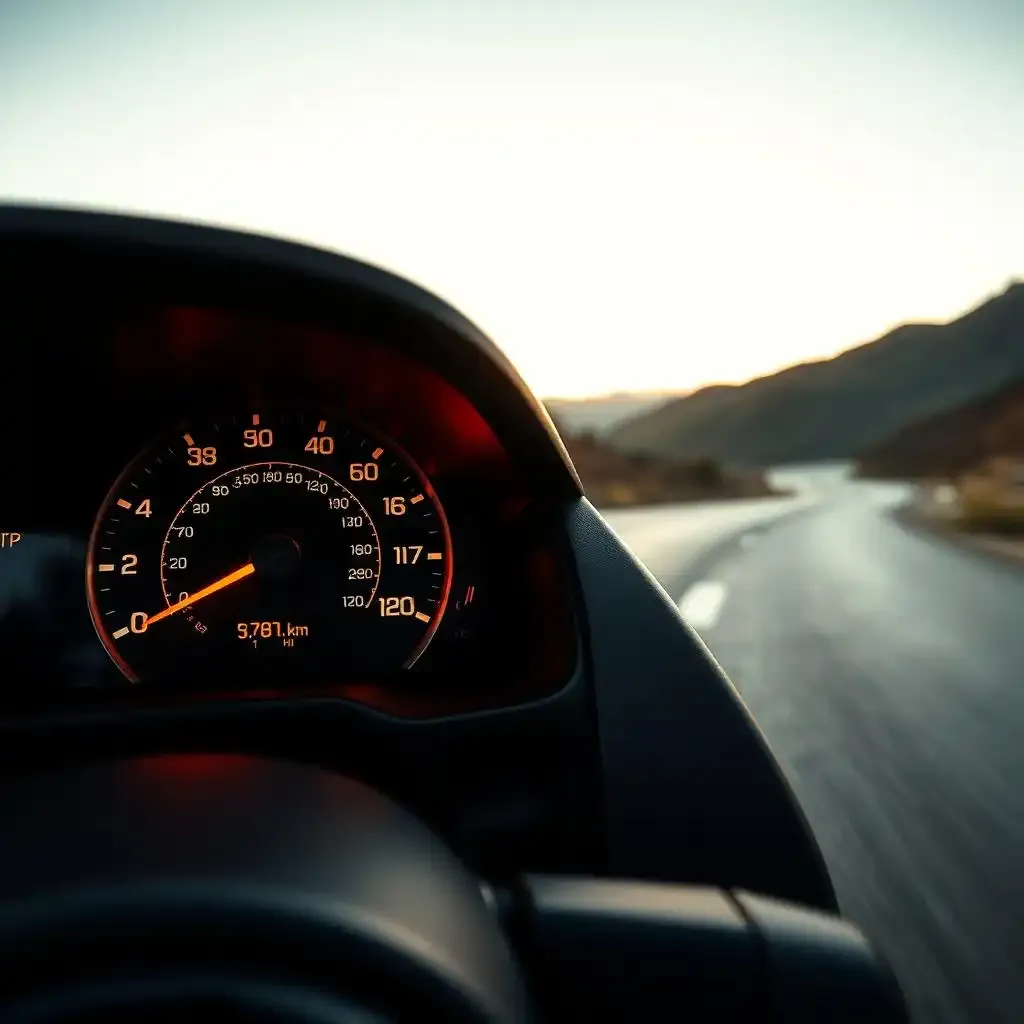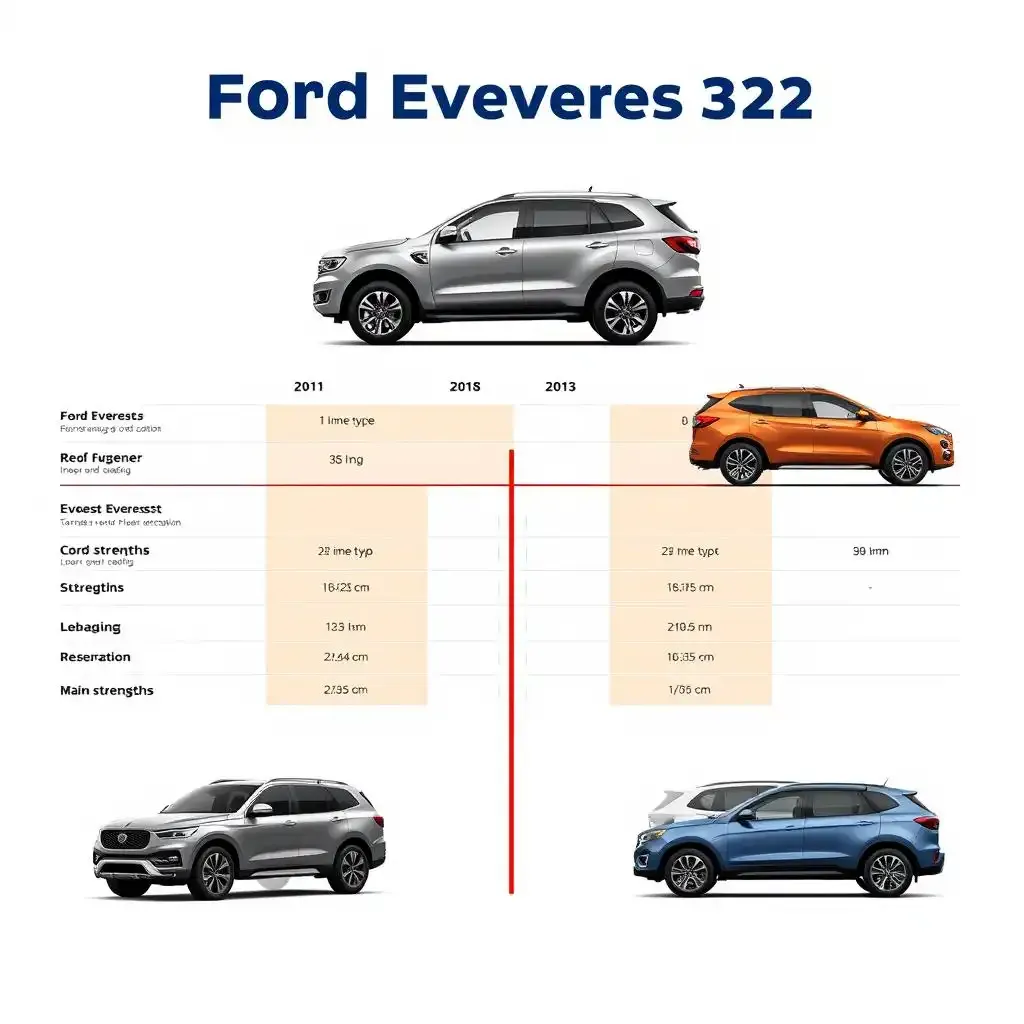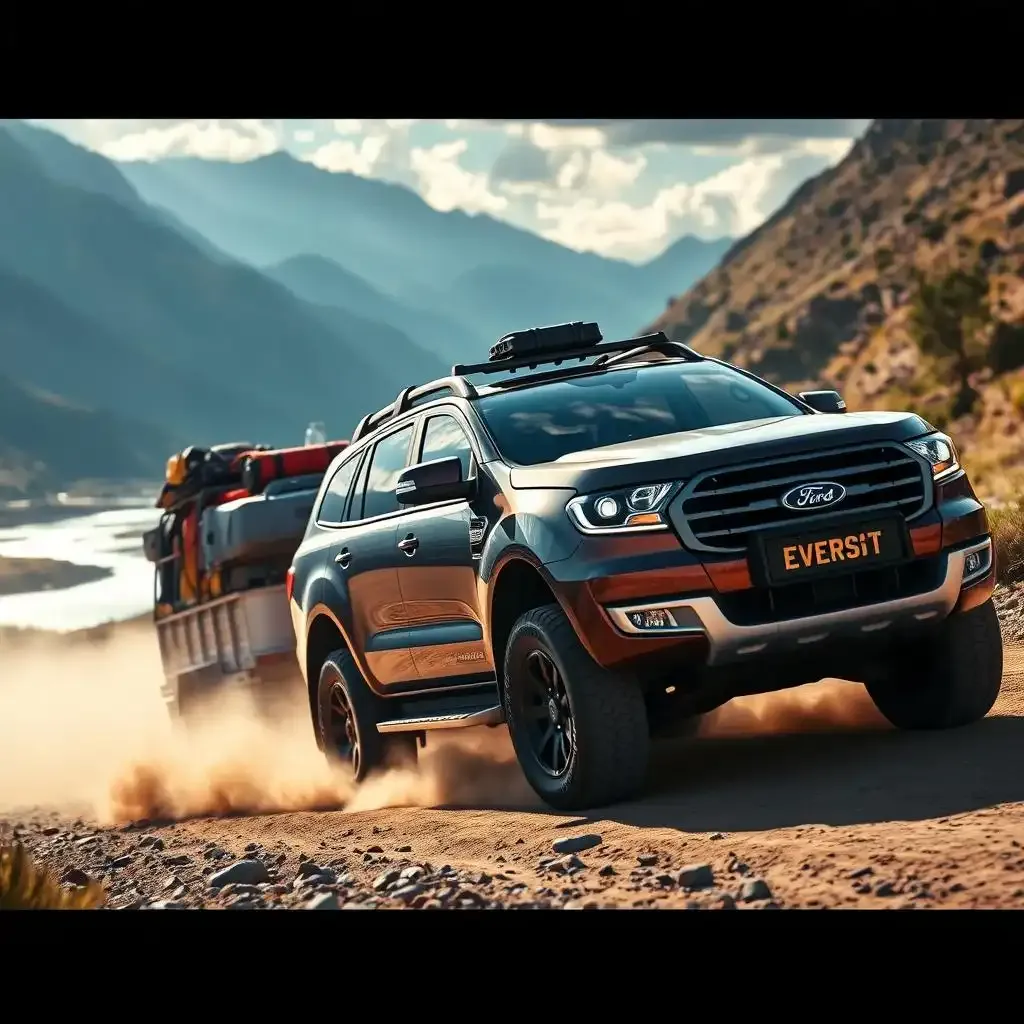Table of Contents
The Ford Everest, a name synonymous with rugged capability and family-friendly design, often sparks discussions about its performance. Among its various engine options, the 3.2-liter variant holds a unique position. While the newer models boast impressive acceleration figures, the Ford Everest 3.2's 0-100km/h time remains a bit of an enigma. This article aims to solve the mystery surrounding this particular model's acceleration, examine into its engine specifics, compare it with its siblings, and understand why its performance is still relevant in today's automotive landscape. This isn't just about numbers; it's about understanding the character of a vehicle that has carved a niche for itself in the hearts of many.
Ford Everest 3.2: Unpacking the Engine
The Heart of the Beast
Okay, so we're talking about the Ford Everest 3.2, right? It's not some fancy spaceship engine, but it's a pretty strong one. Think of it like the reliable workhorse of the Everest family. It's a 3.2-liter, five-cylinder turbo diesel. That's a lot of words, but basically, it means it has five big parts inside that push the car forward, and it uses a turbo to give it extra oomph. It's like having a super-powered fan helping the engine do its job, making it go faster and stronger.
The Sound of Capability
Now, this engine isn't exactly quiet. Some people even say it has an "agricultural" sound. I know, it sounds a bit weird, but it's kind of like a tractor – not in a bad way! It's a deep, rumbling noise that tells you it's working hard. It's not a smooth, quiet purr like some cars; it’s a bit more like a growl. This sound gives the Everest 3.2 a bit of a personality. It's not trying to be fancy; it's just being itself, a powerful, capable machine. It’s like the car is saying, "Yeah, I can handle anything!"
More Than Just Numbers
Engine Feature | Description |
|---|---|
Type | 3.2-liter five-cylinder turbo diesel |
Sound | "Agricultural" - deep and rumbling |
Turbo | Yes, for extra ability |
It's important to understand that this engine isn't just about speed. It’s about strength and reliability. It’s designed to pull heavy loads, climb hills, and go through rough terrain. It’s more like a marathon runner than a sprinter. It might not win a race for the fastest 0-100 time, but it’ll keep going and going without breaking a sweat. The 3.2 engine is the Everest's muscle, built to get the job done, no matter how tough it is. It's the kind of engine you can depend on, like a trusty old friend.
The 0100km/h Time: A Missing Piece for the Ford Everest 3.2

The 0100kmh Time A Missing Piece For The Ford Everest 32
Alright, so here's the deal. We've talked about how beefy the Ford Everest 3.2's engine is, but there's this one thing that's kinda like a missing puzzle piece: its 0-100km/h time. It's like trying to figure out how fast a cheetah can run, but no one actually timed it. We know it's fast-ish, but we don't have the exact number. It’s a bit frustrating, I know. You'd think with all the talk about engines and strength, someone would have clocked it.
It's not like Ford is trying to keep it a secret. It's just that for some reason, this specific number isn't as widely available as it is for other cars. You can find all sorts of info about the engine, its sound, even how much it can tow, but that 0-100 time? It's playing hide-and-seek. It’s like the car is saying, "I'm more than just a number, okay?". And maybe it is! Maybe the 0-100 isn't everything for this particular model.
What We Know | What We Don't Know |
|---|---|
Engine: 3.2-liter five-cylinder turbo diesel | Exact 0-100km/h time |
Sound: "Agricultural" - deep and rumbling | Why it's not widely published |
Capability: Strong, reliable, good for towing | How it compares to other cars on acceleration |
I mean, think about it. The Everest 3.2 is built more for toughness than speed. It’s like comparing a mountain goat to a racehorse. The goat isn't winning any sprints, but it can climb a mountain without breaking a sweat. That's the Everest 3.2 in a nutshell. So, while we're all curious about that 0-100 number, it's important to remember that this car has other strengths that are way more important. It's about the progression, not just the quick start, right?
Comparing the Ford Everest 3.2 with Other Everest Models

Comparing The Ford Everest 32 With Other Everest Models
The Everest Family Tree
So, the Ford Everest isn't just one car; it's a whole family with different members. Think of it like siblings, each with their own strengths and quirks. We've got the 3.2, which we've been talking about, and then there are the newer ones. The newer models come with smaller engines but have some tech upgrades. Like, some have a V6 engine and others use a four-cylinder bi-turbo. It's like some siblings are good at sports, and others are good at gadgets, right? The 3.2 is the reliable older brother, built for hard work, while the others are like the tech-savvy younger ones, quicker and more efficient.
Speed vs. Strength
Now, here's where it gets interesting. The newer Ford Everests, especially the ones with the V6 engine, are way faster in the 0-100km/h sprint. Like, the 2024 Everest Platinum V6 can do it in about 9.4 seconds. That's over a whole second faster than the four-cylinder bi-turbo version. It's like a cheetah versus a strong, steady bull. The cheetah is faster over short distances, but the bull is stronger and can pull a heavy load all day long. I think that kinda sums up the difference. The 3.2 might not win a drag race, but it's got the muscles to tackle the tough stuff. It’s important to remember that sometimes, the fastest isn't always the best for the job.
Everest Model | Engine Type | Approx. 0-100 km/h | Main Strength |
|---|---|---|---|
Everest 3.2 | 3.2-liter five-cylinder turbo diesel | Not Widely Published | Reliability & Towing |
Everest V6 (2024) | V6 | 9.4 seconds | Speed & Efficiency |
Everest Bi-Turbo | Four-cylinder bi-turbo | 10+ seconds | Fuel Efficiency |
Why the Ford Everest 3.2's Performance Still Matters

Why The Ford Everest 32s Performance Still Matters
The Real-World Muscle
Okay, so the Ford Everest 3.2 might not be the quickest kid on the block when it comes to 0-100 times, but honestly, who cares? It's like comparing a weightlifter to a sprinter. The sprinter is fast for a short burst, but the weightlifter has the strength to handle anything. The 3.2 is all about real-world muscle. It's built for pulling heavy trailers, going off-road, and carrying a bunch of gear. I mean, if you're trying to haul a boat up a steep hill, you're not gonna care about a split-second difference in acceleration. You want something that can do the job, and that's where the 3.2 shines. It's like that friend who always shows up to help you move, not the one who just talks about how fast they can run.
The Dependability Factor
And it's not just about raw strength, either. The Everest 3.2 has a reputation for being super dependable. Think of it like a trusty old dog – it might not be the flashiest, but it's always there for you. I mean, people aren't buying this car to win races; they're buying it to get to remote places and back, or to haul their family across the country. It's about getting to your destination, no matter what, and the 3.2 is a workhorse that gets the job done without any fuss. It's like that old pair of boots you can always rely on, no matter how rough the terrain gets. It's like the saying "slow and steady wins the race" but in the car world.
Aspect | Ford Everest 3.2 | Ford Everest V6 |
|---|---|---|
0-100 km/h | Not a Focus | Quicker |
Real-World Capability | High | Good |
Dependability | Very High | High |
Final Thoughts on the Ford Everest 3.2
The Ford Everest 3.2, while not boasting the quickest 0-100 times compared to newer models, still holds its own in the SUV market. Its robust engine and dependable performance make it a solid choice for those who value capability and reliability over breakneck acceleration. The fact that its specific 0-100 time isn't widely publicized speaks to the fact that its appeal lies in its overall capabilities rather than pure speed. It's a workhorse, not a racehorse, and that's precisely what many drivers appreciate about it. Ultimately, the Everest 3.2's legacy is one of strength, dependability, and a certain charming agricultural growl that's hard to forget. It serves as a reminder that performance is about more than just a single acceleration number.